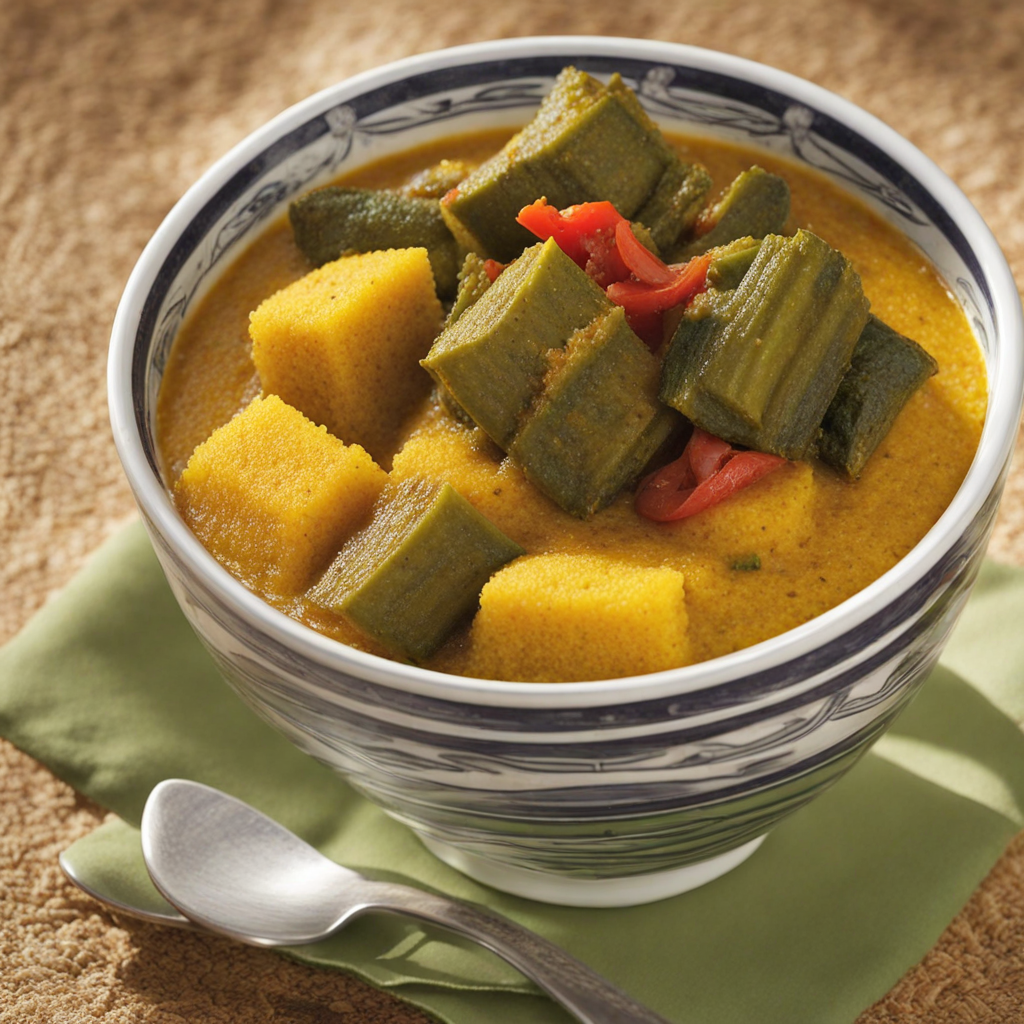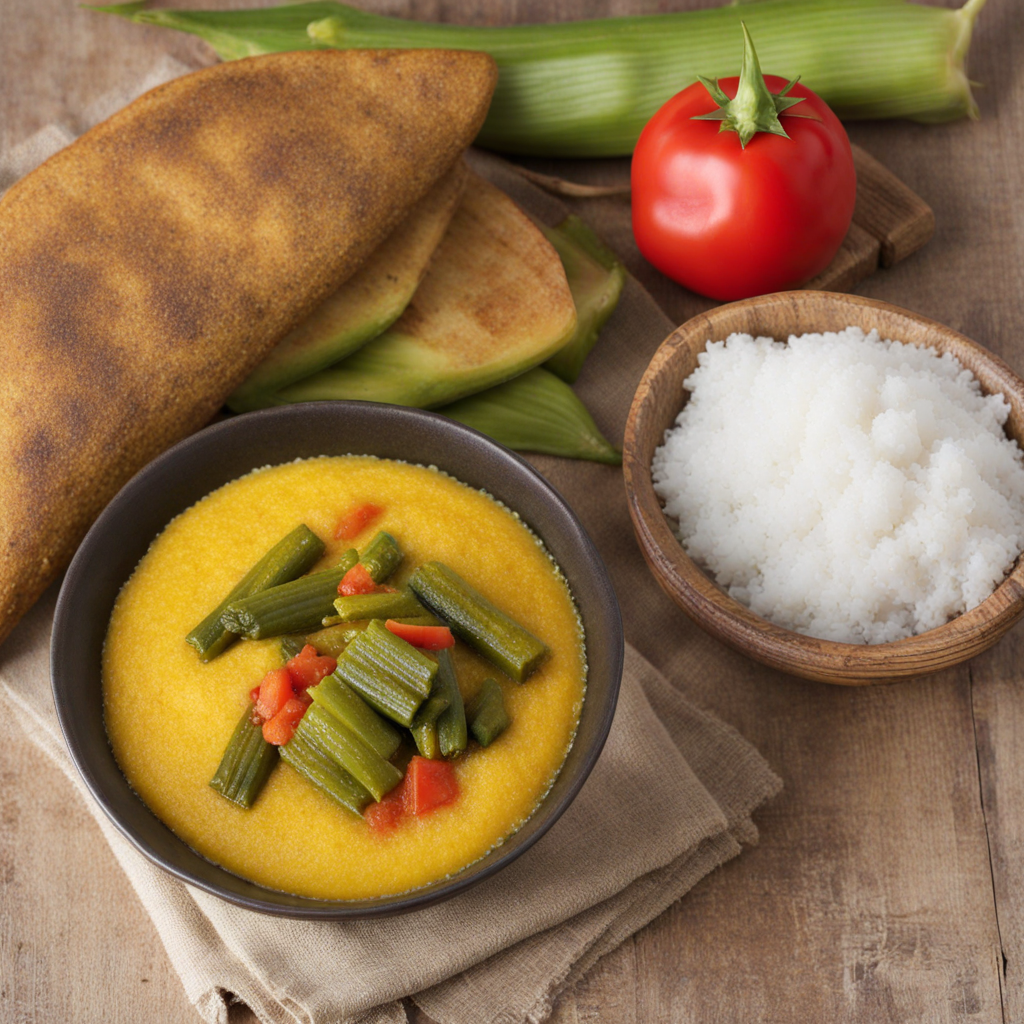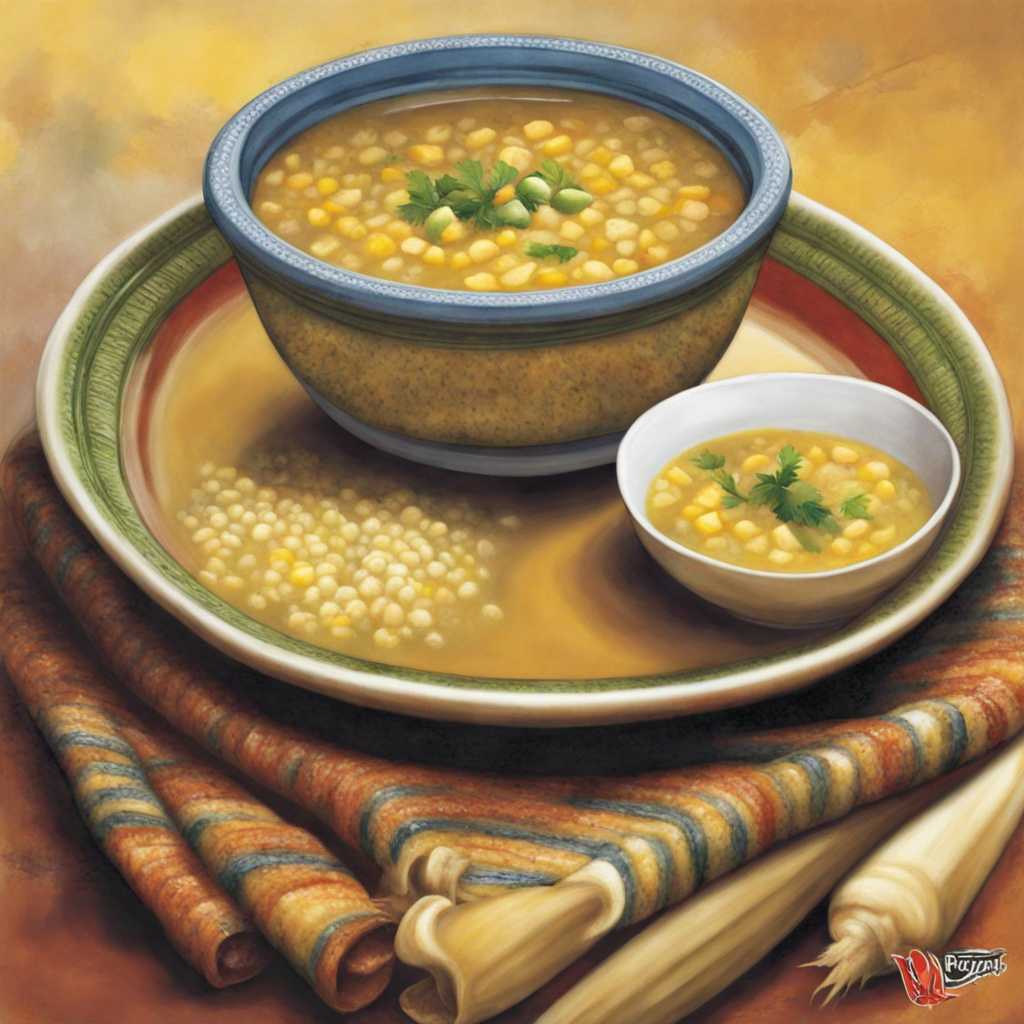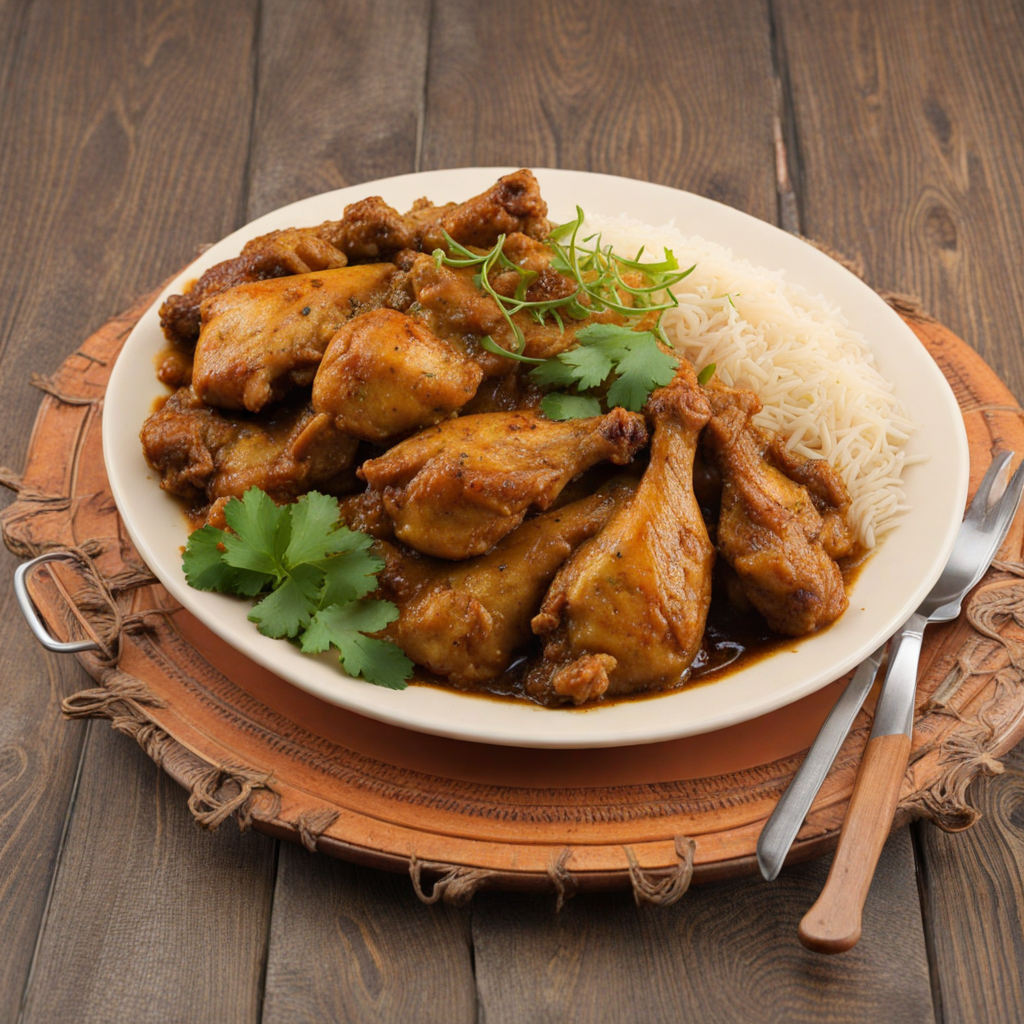Cou Cou
Cou Cou is a delightful staple dish from Trinidad and Tobago, celebrated for its unique texture and rich flavors. Made primarily from cornmeal and okra, Cou Cou is often cooked to a smooth, creamy consistency, resembling a polenta or a thick porridge. The dish is typically seasoned with a blend of spices and sometimes infused with herbs, giving it a distinctive taste that complements its simple ingredients. The okra adds a natural thickness to the mixture, while its slightly mucilaginous texture contributes to the overall mouthfeel, making Cou Cou a comforting and satisfying meal. Traditionally, Cou Cou is served with a variety of savory accompaniments, most notably flying fish, which is often stewed in a flavorful sauce. This pairing highlights the culinary heritage of Trinidad and Tobago, where fresh seafood is abundant. The combination of the mildly sweet cornmeal base and the zesty, seasoned fish creates a harmonious balance of flavors that is both hearty and uplifting. It's common to find Cou Cou served at festive occasions and family gatherings, where its comforting presence brings people together around the dining table. The dish's vibrant history is also reflected in its preparation methods, which can vary from household to household. Some cooks prefer to incorporate additional ingredients like garlic, onions, and peppers, elevating the dish with layers of flavor. Additionally, the versatility of Cou Cou allows it to be enjoyed with other proteins such as chicken, shrimp, or even vegetarian options, catering to various dietary preferences. Discovering Cou Cou is not just about tasting a new dish; it’s a journey into the heart of Trinidadian culture and the warmth of its culinary traditions.
How It Became This Dish
The History and Cultural Significance of Cou Cou in Trinidad and Tobago Introduction Cou Cou, a traditional dish from Trinidad and Tobago, is a beloved staple that reflects the rich culinary tapestry of the twin-island nation. This hearty dish, comprised of cornmeal and okra, is often served alongside flying fish, embodying the fusion of African, Indigenous, and European culinary influences that characterize the Caribbean. To understand Cou Cou’s significance, one must delve into its origins, the cultural practices surrounding it, and how it has evolved over time. Origins and Ingredients The roots of Cou Cou can be traced back to the Indigenous peoples of the Caribbean, particularly the Arawaks and Caribs, who were among the first inhabitants of Trinidad and Tobago. They cultivated various crops, including corn, which became a staple in their diet. When European colonizers arrived, they brought with them new agricultural practices and crops, further enriching the local food landscape. Cornmeal, derived from maize, gained prominence in the Caribbean, as it was versatile and could be used in numerous dishes. The dish itself is primarily made from cornmeal and finely chopped okra, which helps to give Cou Cou its characteristic texture. Okra, believed to have African origins, was introduced to the Caribbean through the transatlantic slave trade. Enslaved Africans brought with them their culinary traditions, which they blended with local ingredients and cooking techniques to create unique dishes, one of which is Cou Cou. In its simplest form, Cou Cou is a mixture of cornmeal and okra cooked in water, seasoned with salt, and often flavored with spices or herbs. The dish is traditionally stirred vigorously to achieve a smooth, creamy consistency, a process that requires skill and patience. This technique reflects the labor and love infused in Caribbean cooking, where food preparation is often a communal activity. Cultural Significance Cou Cou holds profound cultural significance in Trinidad and Tobago, particularly within the African diaspora. It is not just a dish but a symbol of resilience and resourcefulness among the enslaved Africans who adapted their culinary practices to make the most of the ingredients available to them in their new environment. Cou Cou is often associated with the phrase "cou-cou," which refers to the sound made while stirring the dish, further emphasizing its connection to the cultural practices of the region. The dish is most famously paired with flying fish, a local delicacy. This combination is so quintessential to Trinidadian and Tobagonian cuisine that it has been dubbed the national dish of Barbados, showcasing the cross-cultural ties among the islands of the Caribbean. In Trinidad, Cou Cou is often served during special occasions, family gatherings, and Sunday dinners, highlighting its role in bringing people together. Moreover, Cou Cou has become a symbol of national pride, celebrated during events such as the annual "Cou Cou and Flying Fish Festival," which showcases local culinary talents and promotes the cultural heritage of Trinidad and Tobago. This festival not only highlights the dish but also emphasizes the importance of food as a means of preserving cultural identity. Development Over Time Over the years, Cou Cou has evolved, reflecting changes in social dynamics, culinary trends, and globalization. In traditional households, the preparation of Cou Cou is often a communal affair, where family members gather to cook, share stories, and pass down recipes from one generation to the next. However, with the rise of fast food and modern cooking methods, the preparation of Cou Cou has become less common in some urban settings, leading to concerns about the preservation of this cultural heritage. In contemporary Trinidad and Tobago, chefs and home cooks alike have begun to experiment with Cou Cou, incorporating various ingredients and techniques to give the dish a modern twist. Some variations include the addition of spices such as garlic, thyme, or even coconut milk, which adds depth and richness to the flavor. While traditionalists may argue for the preservation of the original recipe, these innovations highlight the dynamic nature of culinary practices and the adaptability of Cou Cou to changing tastes. Furthermore, the influence of tourism has also played a role in the evolution of Cou Cou. As Trinidad and Tobago became a popular destination for international travelers, local chefs began to present Cou Cou in more upscale dining settings, elevating it from a simple home-cooked dish to a gourmet experience. This shift has led to a broader appreciation for Caribbean cuisine, showcasing the complexity and flavors of dishes like Cou Cou to a global audience. Conclusion Cou Cou is more than just a dish; it is a testament to the rich history and cultural significance of Trinidad and Tobago. From its Indigenous roots to its adaptation by African slaves, Cou Cou embodies the resilience and creativity of the Caribbean people. As it continues to evolve, the dish remains a cherished part of the culinary landscape, symbolizing unity and cultural pride. In a world where globalization challenges traditional culinary practices, Cou Cou stands as a reminder of the importance of preserving cultural heritage through food. Its presence in homes and restaurants, as well as festivals celebrating its history, ensures that Cou Cou will remain an integral part of Trinidad and Tobago’s identity for generations to come. Whether served at a family gathering or featured in an upscale restaurant, Cou Cou continues to connect people to their roots, fostering a sense of belonging and community through the universal language of food.
You may like
Discover local flavors from Trinidad And Tobago







